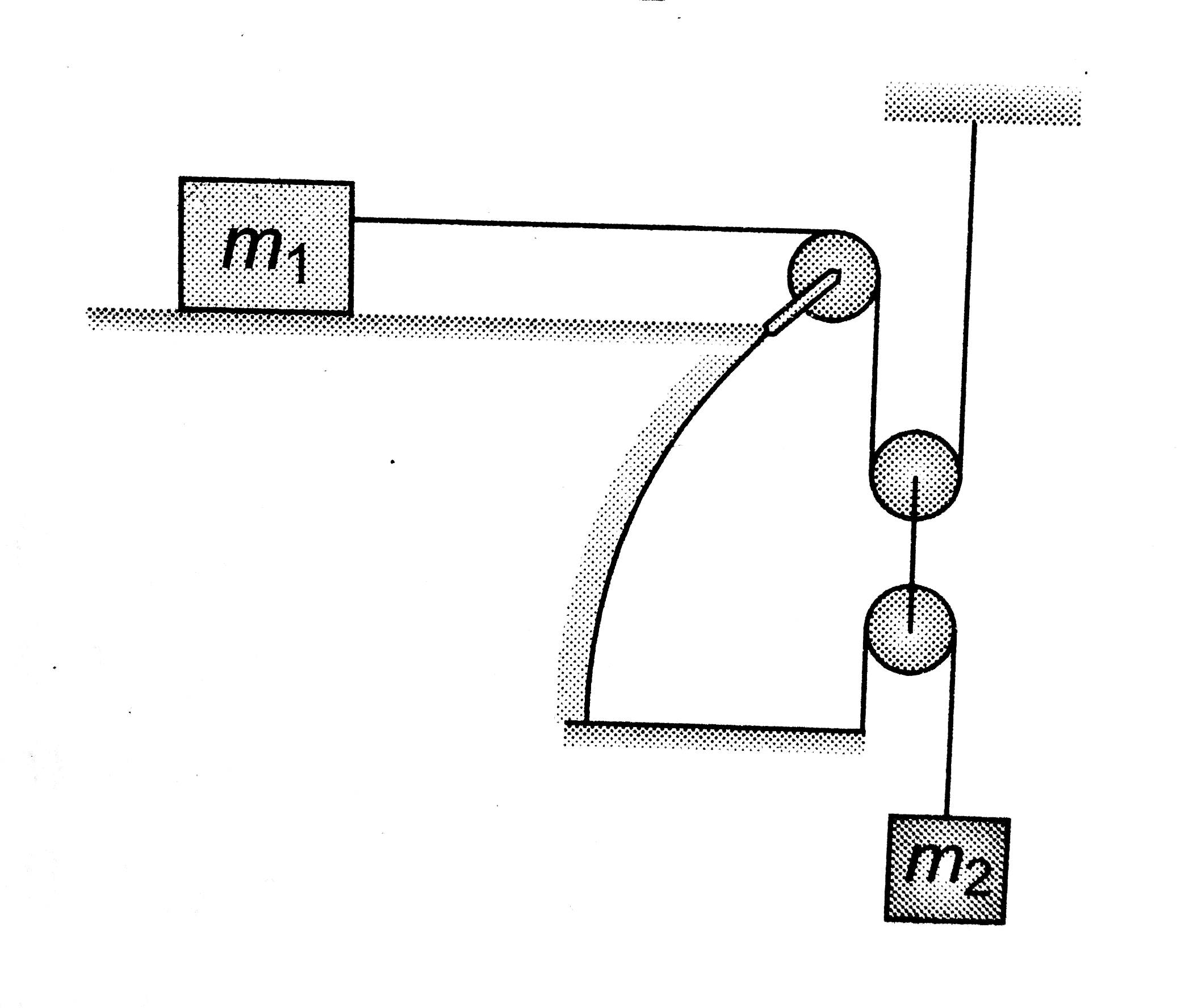Two blocks M1 and M2 having equal mass are free to move on a horizontal frictionless surface. M2 is attached to a massless spring as shown in figure. Initially M2 is at rest and M1 is moving toward M2 with speed υ and collides head-on with M2.

While spring is fully compressed, all the KE of M1 is stored as PE of spring.
While spring is fully compressed, the system momentum is not conserved, though final momentum is equal to intital momentum.
If spring is massless, the final state of M1 is state of rest.
If the surface on which blocks are moving has friction, then collision cannot be elastic.
The correct Answer is:C, D
While spring is fully compressed, the entire K.E. of M1 is not stores as P.E. of spring as M2 may move. If spring is massless, then as M1=M2, velocities of M1 and M2 are interchanged on collision. M1 comes to rest, instead of M2. Choise (c) is correct.
If surface on which blocks are moving has friction, loss of energy is involved. Collision cannot be eleastic. Choice (d) is correct.
Topper's Solved these Questions
- WORK, ENERGY AND POWERBOOK - PRADEEPCHAPTER - WORK, ENERGY AND POWEREXERCISE - JEE (Main and Advanced)
82 Videos
- WORK, ENERGY AND POWERBOOK - PRADEEPCHAPTER - WORK, ENERGY AND POWEREXERCISE - Comprehension
9 Videos
- WORK, ENERGY AND POWERBOOK - PRADEEPCHAPTER - WORK, ENERGY AND POWEREXERCISE - Problems For Practice
76 Videos
- THERMODYNAMICSBOOK - PRADEEPCHAPTER - THERMODYNAMICSEXERCISE - Assertion- Reason Type Questions
19 Videos
Similar Questions
Knowledge Check
Two blocks M1andM2 having equal masses are to move on a horizontal frictionless surface. M2 is attached to a massless spring as shown in figure. Initially M2 is at rest and M1 is moving toward M2 with speed v and collides head-on with M2.
 AWhile spring is fully compressed, all the kinetic energy of M1 is stored as potential energy of springBWhile spring is fully compressed, the system's momentum is not conserved, though final momentum is equal to initial momentum.CIf spring is massless, the final state of the M2 is state of rest.DIf the surface on which blocks are moving has friction, then collision cannot be elastic
AWhile spring is fully compressed, all the kinetic energy of M1 is stored as potential energy of springBWhile spring is fully compressed, the system's momentum is not conserved, though final momentum is equal to initial momentum.CIf spring is massless, the final state of the M2 is state of rest.DIf the surface on which blocks are moving has friction, then collision cannot be elasticA block of mass 2 m is pulled along a horizontal frictionless surface by a rope of mass m as shown in the figure given. What force is exerted by the rope on the block ?
 AF3BF2C2F3DF
AF3BF2C2F3DFTwo masses m1 and m2 are attached to a spring balance S as shown in figure. m1>m2 then the reading of spring balance will be .
 .A(m1−m2)B(m1+m2)C2m1m2m1+m2Dm1m2m1+m2
.A(m1−m2)B(m1+m2)C2m1m2m1+m2Dm1m2m1+m2
Two balls A & B of mass m1 and m2 are kept on a horizontal smooth surface. A is given a velocity towards B so that they perform head on collision
View SolutionTwo block of masses m1 and m2 are connected as shown in the figure. The acceleration of the block m2 is:

View SolutionTwo blocks of mass m1 and m2 (m1<m2) are connected with an ideal spring on a smooth horizontal surface as shown in figure. At t = 0 m1 is at rest and m2 is given a velocity v towards right. At this moment, spring is in its natural length. Then choose the correct alternative :

View SolutionTwo blocks m1 and m2 are allowed to move without friction Block m1 is on block m2 and m2 slides on smooth fixed incline as shown The angle of inclination of inclined plane is θ
 .
.
The acceleration of m2 with respect to ground is .
View SolutionTwo blocks m1 and m2 are allowed to move without friction Block m1 is on block m2 and m2 slides on smooth fixed incline as shown The angle of inclination of inclined plane is θ
 .
.
Normal reaction on m1 is .
View Solution


